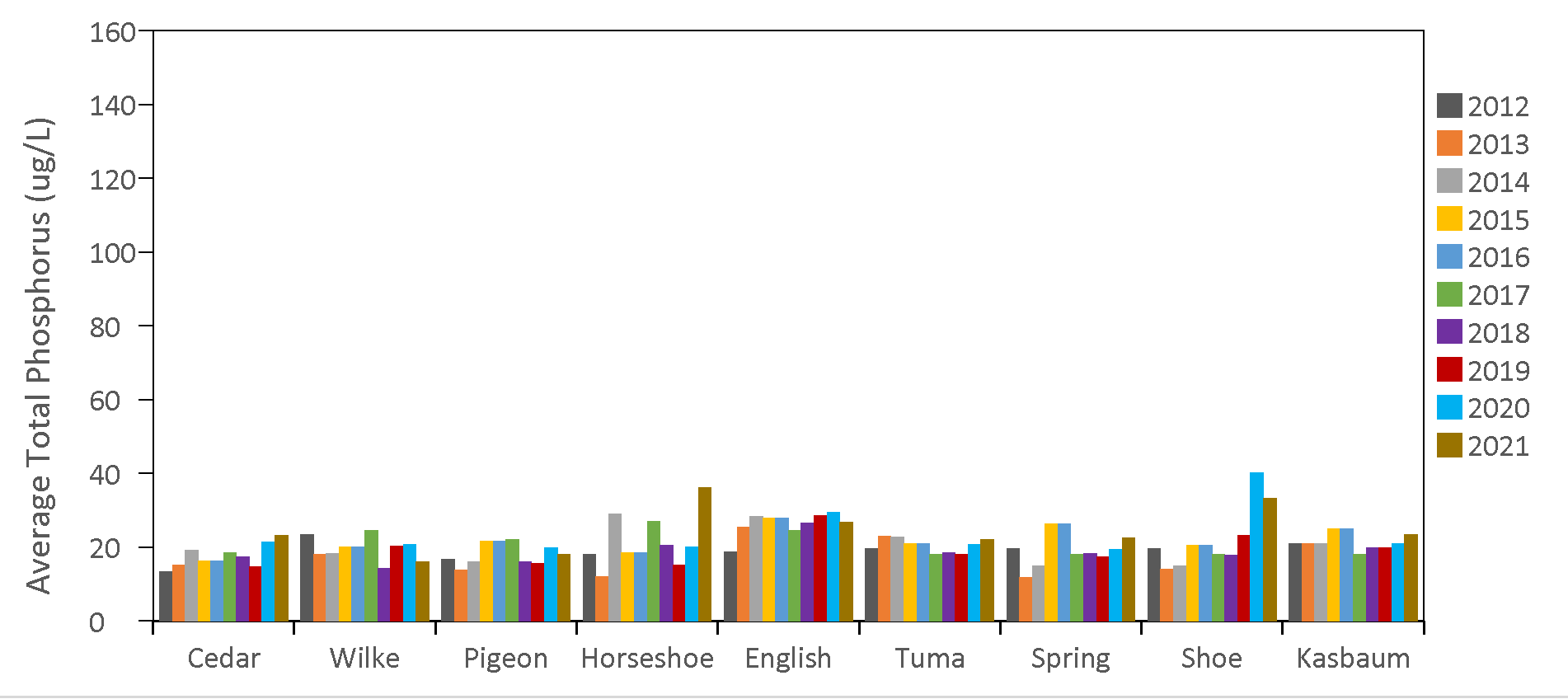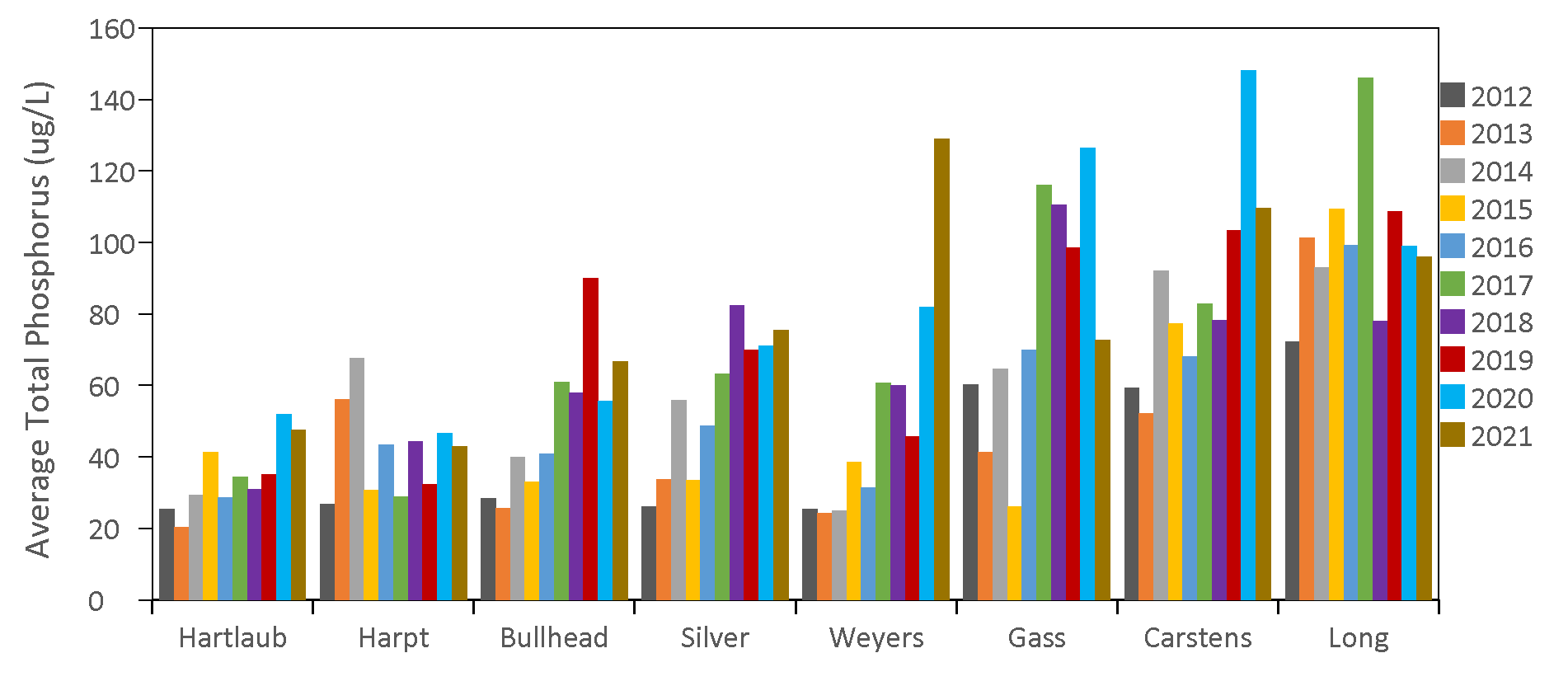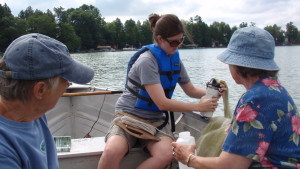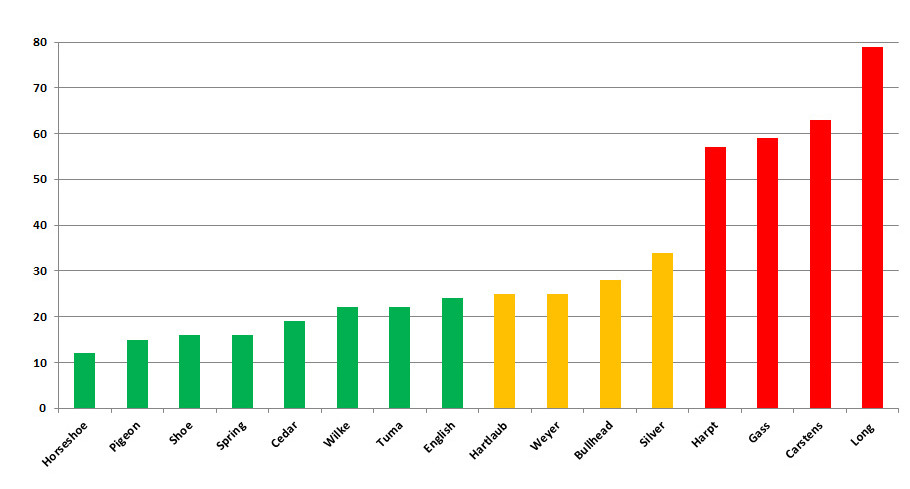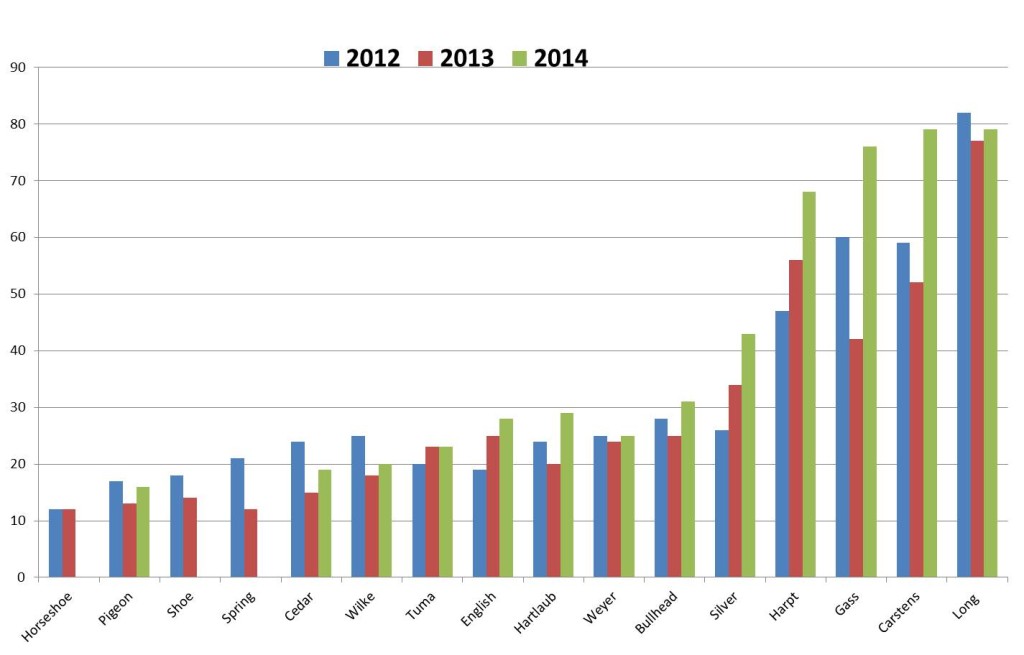Visit our sponsors
The Wisconsin DNR issued a 2013 grant to MCLA to test water chemistry in specified Manitowoc lakes. The intent of the grant was to measure the health of lakes in Manitowoc, compare lake chemistry and use the information to target watersheds of concern. Water test results have been completed and are located on the state website.
Teams of DNR-trained water quality monitors collected water samples at ice out and after the lakes experienced early turnover to effectively mix the lake and provide a uniform water sample. Phosphorus samples taken at this time of year represent the lake’s total phosphorus levels available for the season’s aquatic plant growth and not tied up in plant materials or lake sediments. It also represents the lake’s total phosphorus load.
Click here to read the final report of the 2013 testing activities, protocol, and results (PDF).
Click here to view the data collected for 2013 (PDF).
Related articles:
• 2021 Phosphorus Levels in All Lakes (Graph)
• Gene Weyer: Water Quality Presentation Dec 2019
• Ron Gerrits: A Brief History of Bullhead Lake Water Quality Sep 2019
• John Durbrow: The Impact of Water Clarity on Home Values Apr 2019
• Lake stewards continue phosphorous fight –Valders Journal Feb 2019
2013 to 2014 results clearly show increase phosphorus loadings in 2014 on lakes with larger watershed drainage areas such as Carstens, Silver, English, Hartlaub, Horseshoe and Long Lakes (no data was available for Pigeon Lake). Silver Lake has been experiencing over-topping of the diversion dike delivering increased sediment loads to the lake. This years samples do not represent the large runoff events that occurred in May or June this spring. However, it may represent storm sediment loading from storm events since the 2013 sampling.
Generally, total phosphorus loads from storm events accumulate over time and do not reduce over the short term. Deep seepage lakes like English Lake can take from 60 to 90 years to displace its total water volume. Control of nonpoint pollution and sediment runoff in the watersheds will be critical if long term phosphorus monitoring showing increase loading rates.
Historically the common method to reduce total phosphorus levels in a lake is to treat the lake with alum, an aluminum sulfate compound that ties up phosphorus in the lake sediment. Bull Head Lake in the western side of the County was one of the first in Wisconsin to receive an alum treatment and, approximately 25 years later, received a second treatment. In our region, Silver Lake and East Alaska Lake in Kewaunee County were treated to reduce the phosphorus loads and improve water quality. DNR will not fund or approve an alum treatment unless there is evidence that nonpoint pollution and sediment are adequately controlled to insure a longer life of the treatment method.
Average Total Phosphorus for Manitowoc County Lakes — 2021 Update
